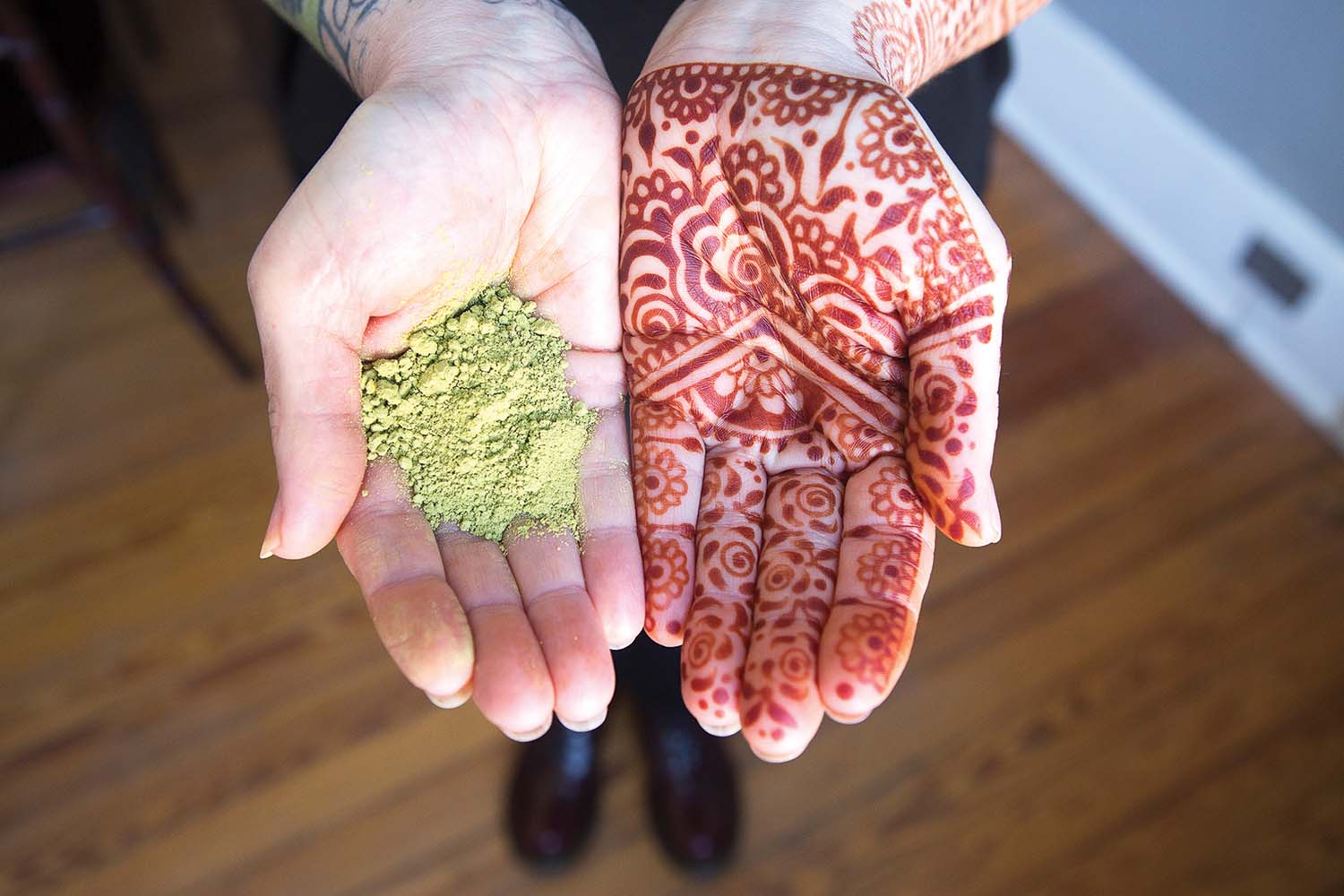
Portrait by Matt Rose
In 1997, Julie Schantz became so smitten with henna body adornment, or mehndi, that she quit her job as a Miami public-school art teacher to focus on it full time. Henna is a plant that only grows in extremely hot, dry climates, including in India and Pakistan. The leaves are dried and powdered into a reddish-brown pigment that’s mixed into a paste and applied through a fine-tipped cone. Now Schantz lives in Asheville, where clients seek her work to make an individual statement — from henna-ed hands to intricate designs on pregnant bellies and “henna crowns” on shaved heads (often after cancer treatment) — or as a unifying decorative element at weddings. Despite its bohemian aura, henna body art is even used as a bonding activity at corporate events.
How did you discover henna?
An eight-year-old came to class with henna decorating her hands. All she could tell me was, “My aunt puts this stuff on my hands and then they look like this.” I loved it, but was at a loss. But I happened to be in NYC two weeks later and saw a stranger with henna on her hands. She sent me to this Moroccan home-furnishings store where they were doing it downstairs.
Who taught you?
I consider myself self taught. I spent months in the library doing research and practiced a lot. That was before online learning. But when you have a passion for something you just find a way.
A professional setback put you on a new path …
The school where I worked took away my art room. I resigned and started offering henna services out of my home, at festivals and parties, and at different shops around Miami. I put pillows on the floor in a record store and did henna there.

Was anyone else in Miami doing henna in the record-store era?
No. I was on the news and everything. The Indian community in Miami encouraged me, too, because it was sort of a lost art and I was teaching them about it again. It was awesome.
Which body parts accept henna the best?
It varies from person to person, but the palms and soles stain best, and the back of the hand. I also recommend giving henna paste at least four hours to darken. That means you have to chill out, which is a meditative part of the ritual process.
Can henna decorate skin that has a very dark pigment?
Yes, and I recommend doing it on the palm. You can get a beautiful burgundy color.
Any caveats for consumers?
Always ask the artist or supplier if they made the paste themselves and what’s in it. I never use a premix, and what’s called “black henna” is not even real henna. It’s PPD, a chemical found in hair dyes. In large enough concentrations it can be very toxic, even lethal. Henna artists call it death paste.
Julie Schantz, Asheville Henna, by appointment at Studio Wed or in the client’s home. Julie accepts walk-ins at Woolworth Walk (25 Haywood St., Asheville) on most Saturdays. Check the Asheville Henna Facebook or Instagram pages or text 828-216-2123 to confirm hours, usually either 1-5 or 2-6pm. www.ashevillehenna.com.